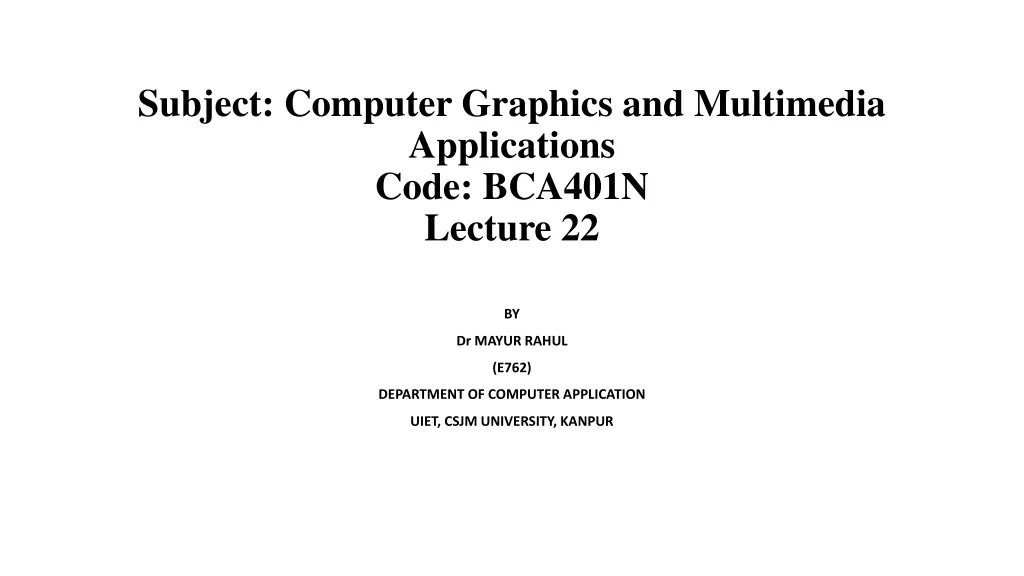
Understanding Parametric Cubic Curves in Computer Graphics and Multimedia
Explore the concept of parametric cubic curves in computer graphics and multimedia applications, represented by three equations allowing curved surfaces to be approximated by polynomial curves. Learn about the use of cubic polynomials, solving unknown coefficients, and types of cubic curves such as Hermite, Bezier, and splines.
Download Presentation

Please find below an Image/Link to download the presentation.
The content on the website is provided AS IS for your information and personal use only. It may not be sold, licensed, or shared on other websites without obtaining consent from the author. If you encounter any issues during the download, it is possible that the publisher has removed the file from their server.
You are allowed to download the files provided on this website for personal or commercial use, subject to the condition that they are used lawfully. All files are the property of their respective owners.
The content on the website is provided AS IS for your information and personal use only. It may not be sold, licensed, or shared on other websites without obtaining consent from the author.
E N D
Presentation Transcript
Subject: Computer Graphics and Multimedia Applications Code: BCA401N Lecture 22 BY Dr MAYUR RAHUL (E762) DEPARTMENT OF COMPUTER APPLICATION UIET, CSJM UNIVERSITY, KANPUR
OUTLINE Prametric cubic curves
Prametric cubic curves Parametric curves are represented by three equations x = x(t), y = y(t), z = z(t) which allows a curved surface to be approximated by a piecewise polynomial curve. The three equations above are cubic polynomials in the parameter t. Cubic polynomials are used because this is the lowest order polynomial which allows non-planar curves to be expressed. The slope of the tangent line at (x, y, z). So the "movement" along the curve at (x, y, z) is linear Aquadratic polynomial. So the "movement" along the curve at (x, y, z) is non-linear and may cross itself
Parametric cubic curves Each cubic polynomial has the general form : at3 + bt2 + ct + d The four unknown coefficients (a, b, c, d) are solved for using four knowns (which might be the two endpoints of the curve and the derivatives of the endpoints or the unit tangent vectors at the endpoints). The cubic polynomials required to specify a curved segment Q(t) are (EQS1): x(t) = axt3 + bxt2 + cxt +dx y(t) = ayt3 + byt2 + cyt +dy z(t) = azt3 + bzt2 + czt +dz Because we are dealing with finite curves, t is in the interval [0,1].
Parametric cubic curves Parametric cubic curves We can more compactly represent Q(t) as T*C where T is the row vector : [ t3 t2 t 1] and C is the 4 X 3 matrix : ax ay az bx by bz cx cy cz dx dy dz
Types of cubic curves Types of cubic curves The three types of cubic curves are hermite defined by two endpoints and two tangent vectors bezier defined by two endpoints and two other points that control the endpoint tangent vectors splines which are defined by 4 endpoints.
REFERENCES https://www.tutorialspoint.com/dbms/dbms_overview.htm https://www.studytonight.com/dbms/database-model.php https://www.geeksforgeeks.org/introduction-of-process-synchronization/\ https://www.javatpoint.com/os-process-synchronization-introduction
